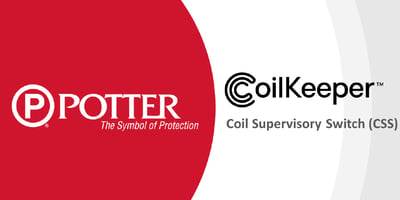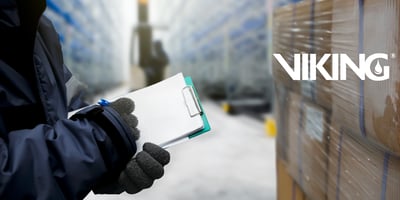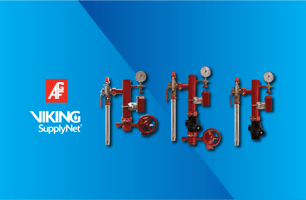NFPA 13 requires the supervision of electric actuators (coils on solenoid valves) on preaction or...
Combustible and Flammable Liquids Code: NFPA 30, Ch. 16, 2024 Edition
First seen in AFSA's May/June 2024 edition of Sprinkler Age.
For the most part, ignitable liquids are out of the scope of NFPA 13—when working with flammable or combustible liquid storage, NFPA 30, Combustible and Flammable Liquids Code, is the suitable reference document. NFPA 30 contains a surplus of information about the correct storage or handling of ignitable liquids, and the standard addresses many occupancies that have ignitable liquids while providing direction concerning quantities allowed on site (referred to as an “MAQ” or Maximum Allowable Quantities). When you exceed MAQ, NFPA 30 has a complete chapter dedicated to which sprinkler or foam water-sprinkler designs need to be utilized.
Chapter 16 of NFPA 30, entitled, “Automatic Fire Protection for Control Areas, Liquid Storage Rooms, and Liquid Warehouses”, has been renamed – previously, its title was “Automatic Fire Protection for Inside Liquid Storage Areas”. The latest title better addresses areas that are used for storage of ignitable liquids. There have been many discussions about whether or not an area was actually storing ignitable liquids, because the area wasn’t technically a warehouse. The simple way to look at this scenario is this: if it quacks like a duck and walks like a duck, it’s a duck. (Storage stays the same path.)
Class Identification and Comprehension
When first reading Chapter 16, readers will find that it begins by stating that it does not apply to Class 1A liquids. This is due to the fact that there haven’t been any full-scale fire tests on Class 1A liquids. To have protection schemed in NFPA 30 requires there to have been full scale fires – each table will reference the full-scale fire test from which it is pulling the protection. Consider Class 1A as the most hazardous of the flammable liquid group of fuels/chemical. The other classes of liquids are Class 1B, 1C, Class 11 (Class 2), and Class 111A and 111B (Class 3A and 3B). (It is necessary to clarify their reference, otherwise one may read them as “class eleven and class one-hundred and eleven”.)
Terminology and References as Related to Liquids
Chapter 16 is full of terms that are specific to ignitable liquids and to packaging types that are unique as well. Some containers are defined as their acronym, which is used through the standard/chapter. For instance, “IBC” stands for “Intermediate Bulk Container”, which is a container that has a capacity not greater than 793 gallons. There are metal and non-metallic IBCs, and the composite IBCs are generally referred to as plastic totes. “Relieving style container” is a term defined in Chapter 16, as well. This is a container that has a means of relieving pressure due to heat, avoiding a rupture or a rocketing event.
The chapter also defines when a material is a liquid or not via a simple chart located early-on in the standard which points out a material’s viscosity and behavior when heated. If the product remains a gel or solidifies when heated, it’s not considered a liquid. It’s important to think of a liquid that freely spreads across a horizontal surface – a large container that spills or loses its contents makes for a large area to protect.
One other important term throughout is “water miscible liquid”, which means the liquid readily mixes with water. Picture this scenario: vodka (water miscible liquid) and water are contained together in a glass, and motor oil (a non-water miscible liquid) and water are contained together in a second glass. The vodka readily mixes with the water while the motor oil separates itself from the water in a different layer. There comes a point where you’ve added so much water to a miscible ignitable liquid that it won’t burn, whereas with non-water miscible liquids, the water simply floats the liquid and spreads it around.
Automatic Sprinkler and Foam-Water Sprinkler Systems
The chapter includes information regarding protection for automatic sprinkler and foam-water sprinkler systems. NFPA 30, Chapter 16 allows all sprinkler system types (except dry systems and double interlocked preaction systems) for standard Class 1B through 111B liquids. The delay in each type of system is too great to protect ignitable liquids. In areas subject to freezing, a single interlocked preaction system would be utilized. Some people argue that non-interlocked and single are the same, but this is not the case. “Single interlocked” means that the detection operates before the sprinkler on the system, delivering water or foam solution upon sprinkler operation.
There have been some notable changes in Chapter 16 regarding foam-water sprinkler systems. The charts in Chapter 16 that reference foam were developed via full-scale fire testing with fluorinated foam concentrates. There has been an act of Congress eliminating fluorinated foams from government use, which was quickly followed by individual states restricting or disallowing the use of fluorinated foam concentrates, which were always known as AFFF or AR-AFFF. Knowing that legislation was ahead of technology, the committee added statements for the use of non-fluorinated foam concentrates, which basically directed you back to the manufacturer for their listed densities, but no value less than what was indicated on the protection tables. The chapter always required the user to refer back to the manufacturer of foam concentrate for minimum listed densities for the discharge device and the specific fuel/chemical it is protecting. The foam manufacturers have been working in recent years to provide listed concentrates that are not fluorinated and that have densities similar to those of the AFFF concentrates. As the standard points out, you will need to contact the foam concentrate manufacturer to determine if their foam concentrate is suitable for the protection of ignitable liquid storage.
The protection tables in NFPA 30 contain a lot of information. When determining a design, begin with the group of liquid a project falls into, followed by the capacity of what’s being protected, then the container type, whether or not it’s packaged (is it in a carton?), ceiling heights, storage heights, ceiling protection, in-rack protection (if applicable), then finally applicable notes and fire test reference. If you do have rack protection, what layout will you use and what scheme?
The flow charts earlier in the chapter will typically place you where you want to be, but it’s important to read the title of the table and its references.
Factory Mutual Involvement in Chapter 16
It is difficult to protect ignitable liquids in plastic containers. The first special rack arrangement for plastic containers was provided by Factory Mutual in the early to mid-1990’s. The product being protected was motor oil in plastic containers. This was where most of us recognize the birth of in-rack scheme A, which utilized horizontal barriers and, in some cases, vertical barriers, and closely spaced quick response sprinklers. Horizontal barriers are used frequently in Chapter 16; this contains the liquid and allows for sprinkler operation quite rapidly. Chapter 16 has several rack schemes as well as sprinkler layouts that are prescribed in the protection of rack storage. As we all know, no one likes horizontal barriers, but in many cases, they are a necessary evil and, in some cases, allow for greater separation of in-rack sprinklers (such as extended coverage sprinklers) specifically tested for ignitable liquids.
Factory Mutual has provided much of the new data found in Chapter 16. One that comes to mind is the distilled spirits in wooden barrel protection schemes. The chapter defines a small distilled spirits facility as one under 7,500 sq. ft. A table is provided for barrel storage in a small distilled spirits facility. There is also direction provided for barrels stored on end, meaning “standing up”, or “on side”, or “laying down”.
NFPA 30, and Chapter 16 in particular, concerns itself with the spill or spreading fire. One way to a handle ignitable liquids is to design containment and drainage of the liquid. For most ignitable liquid storage warehouses, that is impractical – most are rented locations or are land-bound where they cannot create a separate bund area in which to drain the combustible liquid. When you have mixed storage, ignitable liquids and standard Class A fire material, you may have to segregate the ignitable liquids from the Class A materials.
A lot of people think that an ESFR is like a roofer’s card: it covers everything… or so we think. Many spec warehouses are equipped with ESFRs to make them ready to rent, but in some protection schemes in Chapter 16, there are not ESFR options.
NFPA 30 Chapter 16 has many references to its annexes, and most are to Annex A, which is the typical additional explanatory material. Remember Annexes are not enforceable in the standard, but are there to help make the standard easier to understand. Appendix E has the reference fire tests utilized in the development of the protection tables.
Most of us don’t use NFPA 30 as often NFPA 13 — the above was a quick walk through the standard where fire sprinkler protection is prescribed. I would encourage the reader to reference the Combustible and Flammable Handbook for additional explanation of the other chapters in NFPA 30.




